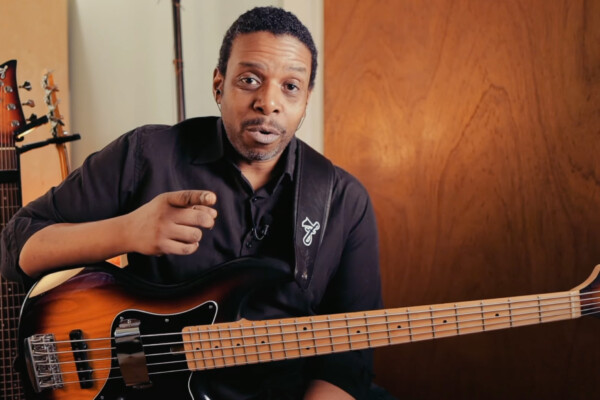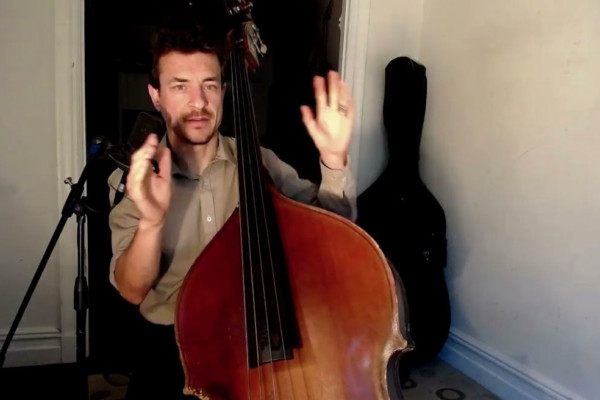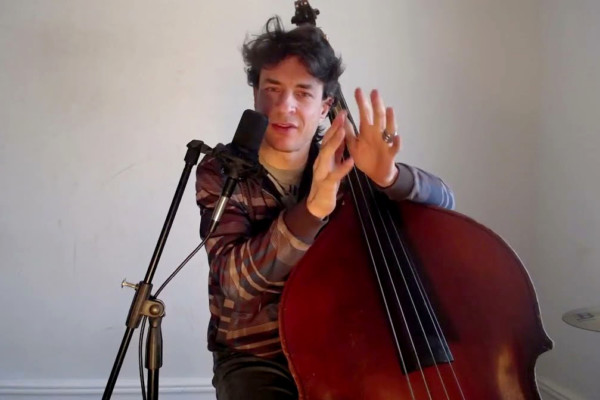Rhythm Series: Improving Your Time
Having good “time,” or sense of pulse, is an essential skill for all musicians and bassists in particular. So much of what we do is reliant upon having a solid, steady and accurate pulse. In fact, I find a highly developed sense of time to be as important as a highly developed sense of pitch, perhaps more so. Ideally, of course, we strive for both.
There are a myriad of ways to improve our sense of tempo. Here are just a few ways for you to experiment with:
Metronome Exercise
I like the exercise below because it puts a spotlight on our sense of tempo. You may be pleasantly surprised at how accurate your sense of pulse is. You may also be horrified at how accurate it is not. Either way, it is good to know.
- Get a metronome with a volume control.
- Set the metronome to a tempo, say 60 bpm (beats per minute)
- Tap the pulse (on a desk, a music stand, your leg, wherever) exactly with the metronome for as long as it takes for you to feel comfortable and like you are in the pocket. A few bars or so is fine. Feel the pulse internally.
- Continue tapping while you lower the metronome’s volume quickly to the point where the metronome is inaudible. If there is a light on the metronome that keeps time visually, do NOT watch it as you keep time on your own. Look away or close your eyes.
- Attempt to keep an exact pulse for approximately eight beats.
- Raise the volume quickly while continuing to tap the pulse. If you were accurate your tapping should match the metronome exactly, without any adjustment required.
- If you were NOT accurate, repeat the procedure (i.e. steps 3-6 above) with the volume at zero for a shorter time span, say 4 beats. Continue until you find your threshold of accuracy. Work to extend it.
- If you WERE accurate, then repeat steps 3-6, tapping with the metronome silent for a longer period of time. Say, 16 beats.
- Continue this process until you can keep a steady tempo with the metrnome silent for 30 seconds…one minute….two minutes…three minutes? How long can you keep a steady pulse?
- Do this with a variety of tempos: slow, medium and fast. Subdividing mentally in smaller rhythmic values (sixteenths, etc.) helps.
Once you can keep accurate time by tapping, try the exercise while playing something simple. For example, a C major scale, four quarter notes per pitch. You may need to enlist a friend to work the metronome volume, or adjust it with your foot.
Real World Time Games
There are also innumerable ways to test your time in everyday life. Many musicians spend a great deal of time in the car going from gig to gig. For the next week try this:
- Turn on your blinker or windshield wipers. Of course, only do this when safe. A long stretch of unhampered, low traffic, highway driving seems the best opportunity.
- Keep time with the blinker by tapping on the steering wheel.
- If the blinker does not seem to subdivide into an easily discernable value, go with “big beat.”
- Turn off the wipers/blinker and keep time on your own.
- Check yourself by turning them on again simultaneously with the beat of your tapping.
- How long can you go? Four beats? 100 yards? ½ a mile? A full mile? More?
You can modify this exercise to work with anything that keeps a steady rhythm: Fans, washing machines, whatever. Search out ways to test and solidify your sense of pulse away from your bass and then bring that improved time into your playing.
Dr. Donovan Stokes is on the faculty of Shenandoah University-Conservatory. Visit him online at www.donovanstokes.com and check out the Bass Coalition at www.basscoalition.com.




Thanks for the great tips Donovan. I work around a lot of stamping presses that pound a steady beat you can feel in the floor. I use this all day long to practice time in some similar ways (although I can’t just turn it off and back on again).
Here’s one of my favorite exercises in timing though. I use a delay pedal without any other time keeping device. I play around with different settings and when I find a groove I just play in time with the delay. You know right away when you fall out of time because the groove falls apart. One of my favorites is to set the pedal to repeat once on the up beat of 2 at a given tempo. You can get a really fun groove rolling and the rewards of staying in the pocket keep me smiling the whole time.